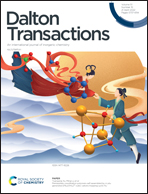Metal–organic framework derived bimetal oxide CuCoO2 as efficient electrocatalyst for the oxygen evolution reaction†
Abstract
Metal–organic framework (MOF) materials with tunable porous morphology, controlled crystalline structure, various compositions, and high specific surface area are widely used as precursors to synthesize electrocatalysts for water splitting, which is beneficial for improving their oxygen evolution reaction (OER) performance. Using ZIF-67 as a Co source and Cu-BTC as a Cu source, hexagonal MOF-derived CuCoO2 (MOF-CCO) nanocrystals with the size of ∼288 nm were prepared through a one-step solvothermal method. The influence of the content of the precursor solvents (absolute ethanol and deionized water), reaction temperature, mass ratio of reactants, NaOH addition, and reactant concentration of precursors on the structure and morphology of the products was investigated. The optimal CuCoO2 nanocrystals (MOF-CCO1) around 288 nm present the highest OER activity, such as a low overpotential of 364.7 mV at 10 mA cm−2, a small Tafel slope of 64.1 mV dec−1, and attractive durability in 1.0 M KOH solution. The XPS results showed that the higher catalytic efficiency of MOF-CCO1 nanocrystals could be due to the oxygen vacancies caused by lattice oxygen loss, the increase of OH− content on the surface, and the synergistic effect of Cu2+/Cu+ and Co2+/Co3+ redox pairs. Finally, a possible OER mechanism for MOF-CCO nanocrystals of water splitting was proposed. This study provides a new approach for the preparation of delafossite nanomaterials and for the improvement of their OER performances.



 Please wait while we load your content...
Please wait while we load your content...